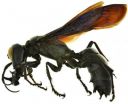(Press-News.org) A new epilepsy gene for idiopathic epilepsy in Belgian Shepherds has been found in the canine chromosome 37. The research of Professor Hannes Lohi and his group conducted at the University of Helsinki and the Folkhälsan Research Center opens new avenues for the understanding of the genetic background of the most common canine epilepsies. The research also has an impact on the understanding of common epilepsies in humans. The research is published in the scientific journal PLoS ONE on March 23, 2012.
Epilepsy affects about 1-5% of the human population at some stage of live, and it includes a host of syndromes the age of onset, causes and prognosis of which vary significantly. Based on their basic mechanisms epilepsy syndromes are divided into genetic (idiopathic) epilepsies, structural / metabolic (symptomatic) epilepsies and epilepsies of unknown cause. Symptomatic causes refer to discernible external or structural change, whereas with idiopathic epilepsy there is a strong genetic background. A common denominator between the different syndromes are reoccurring epileptic seizures, which are divided according to an international classification into two main groups – focal and generalized seizures – based on clinical symptoms and research findings. About two thirds of the seizures in adults are focal in nature and one third generalized. In children and teenagers the occurrence of generalized forms of epilepsy is greater (ca. 50%).
Identification of the epilepsy gene on process
Genetic factors are estimated to play a role in the development of epilepsy in as many as 40% of epilepsy patients. Several genes affecting the development of symptomatic epilepsies have already been identified, but the genetic background of multifactorial idiopathic epilepsies often remain unknown. Both focal and generalized idiopathic epilepsies occur in Belgian Shepherds. The research group of Professor Hannes Lohi, working in collaboration with Danish, Swedish and American researchers in an EU-funded project, has made a major breakthrough by identifying a chromosome region associated with the most common form of epilepsy in dogs. By comparing the genome of dogs with epilepsy and healthy control dogs a gene region in chromosome 37 was discovered, which if homozygous, increases the risk of epilepsy seven-fold. In addition the research findings indicate that other, still unknown, genetic risk factors may be present in the breed.
The identified region has excellent neurological candidate genes for epilepsy and ongoing follow-up research is aimed to identify the specific gene causing epilepsy. Epilepsy genes have not previously been identified in this chromosome region, so the discovery will reveal an entirely new epilepsy gene in dogs and possibly also in humans. The type of epilepsy occurring in Belgian Shepherds is extremely common in also other breeds and thus the discovery may have an impact on the understanding of the epilepsies in different dog breeds.
"There are only few genes in the identified region and I believe that the ongoing analyses will help us to discover the specific epilepsy gene," says Professor Hannes Lohi who led the research. "This would give us a better understanding of the disease mechanisms and provide us with new diagnostic tools for the disease."
The Research group of Hannes Lohi has begun an extensive gene-sequencing project in which the entire identified chromosome region will be 'read through' with a next-generation sequencing method. By identifying the specific gene mutation an individual's epilepsy risk could be assessed, although the gene mutation may also be common in dogs that never become symptomatic of epilepsy.
Epilepsy is common among Belgian Shepherds
"The identified genomic region is likely to be the strongest single risk factor for epilepsy in Belgian Shepherds, and we are studying an interesting gene variant causing an amino acid change in the protein level. However, this homozygous amino acid change is also present in one fifth of healthy Belgian Shepherds. The research continues in the breed and aims to identify the specific mutation for genetic testing in this loci and possible in other chromosomes. The need for the gene test is urgent since as much as 20% of the dogs in this breed are estimated to have epilepsy", comments the first author of the article Eija Seppälä, PhD.
The age of onset of idiopathic epilepsy in Belgian Shepherds is on average 3 years, although the range varies greatly. A seizure often begins as a focal seizure, and the owner may observe abnormal movement, usually on only one side of the dog's body. At this point the dog often seeks out the owner, drools or vomits. With most Belgian Shepherds the seizure becomes generalized and is accompanied with loss of consciousness and irregular cramping in the limbs. The dog may also urinate or defecate involuntarily.
Earlier gene discoveries of the research group
Epilepsy is the most common disorder of the nervous system in dogs and different types of genetic epilepsies occur in dozens of dog breeds. The research group has previously identified the first epilepsy gene for symptomatic epilepsy, EPM2B, in Miniature Wirehaired Dachshunds, as well as more recently a gene, LGI2, associated with transient idiopathic epilepsy in Lagotto Romagnolos. The group has also participated in the discovery of a gene for symptomatic epilepsy in Tibetan Terriers. Lohi and his research group have built a canine DNA bank in Finland, which currently holds almost 40 000 samples from more than 250 different breeds. The DNA bank has played a major role in the execution of among others the current research to be published in March, 2012.
INFORMATION:
The research group of Professor Hannes Lohi works at the Veterinary and Medical Faculties of the University of Helsinki and the Folkhälsan Research Center., This study was supported by the European Commission (FP7-LUPA, GA-201370), the Academy of Finland, the Sigrid Juselius Foundation, the Morris Animal Foundation, the Canine Health Foundation, Biocentrum Helsinki, the Jane and Aatos Erkko Foundation, the University of Helsinki Research Funds, The Finnish Belgian Shepherd Breed Club, Folkhälsan Research Foundation and the Danish Kennel Club.
END
Vienna, Austria: Women who are overweight or obese when they are diagnosed with breast cancer are at higher risk of cancer recurrence or related death than are leaner women, according to a new study to be presented to the 8th European Breast Cancer Conference (EBCC-8) today (Friday). This finding held true even though the study mandated that chemotherapy dosage be adjusted for body weight, and adds further to the evidence that lifestyle factors can influence cancer prognosis, a researcher will tell the conference.
Dr. Jennifer Ligibel, a medical oncologist at the Dana-Farber ...
On March 24, 2012 Mike Hoesly attended the Legacy Mastermind in Hasbrouck Heights, NJ. The mastermind is a group of 20 internet marketers getting together to share industry secrets and tips of the trade. The Loyal 9 Revolution and Team Rashkin are leading the event. These two groups have dominated the home business industry for the past few years drawing in hundreds of thousands of leads and millions of dollars as a result.
Hoesly has attended many live events in the industry and the skills learned here will only add to his repertoire. Hoesly says," Live events ...
Vienna, Austria: The use of ultrasound-guided surgery to remove tumours from women who have palpable breast cancer is much more successful than standard surgery in excising all the cancerous tissue while sparing as much healthy tissue as possible, according to the results of a randomised controlled trial.
As a consequence, researchers told the eighth European Breast Cancer Conference (EBCC-8) today (Friday) they expect their findings will change surgical practice and ultrasound-guided surgery (USS) should become the norm for excising palpable tumours i.e. those that can ...
One cup or two faces? What we believe we see in one of the most famous optical illusions changes in a split second; and so does the path that the information takes in the brain. In a new theoretical study, scientists of the Max Planck Institute for Dynamics and Self-Organization, the Bernstein Center Göttingen and the German Primate Center now show how this is possible without changing the cellular links of the network. The direction of information flow changes, depending on the time pattern of communication between brain areas. This reorganisation can be triggered even ...
When this weekend's (March 24 to 25, 2012) Legacy Training weekend was announced a few months ago, it got the attention of Success Coach Peter Hobler.
Reading through the details, Hobler found out that the event included training by nine of the internet marketing industry's top leaders sharing their know how, expertise and even some of their marketing and leadership secrets.
Hobler started getting excited and shared, "When I read you needed to bring your computer for both actual hands on and over the shoulder training, I knew I had to do whatever I could to attend ...
Vienna, Austria: Results from a phase III clinical trial evaluating a new treatment for breast cancer in post-menopausal women show that the combination of two cancer drugs, everolimus and exemestane, significantly improves bone strength and reduces the chances of cancer spreading (metastasising) in the bone.
Professor Michael Gnant told the eighth European Breast Cancer Conference (EBCC-8) today (Friday) that the latest results from the BOLERO-2 trial would change clinical practice. "These results indicate a new standard of care for women with advanced oestrogen receptor ...
Even in places as seemly well-studied as the national parks of North America, new species are still being discovered. Using ultraviolet light that cause scorpions to fluoresce a ghostly glow, researchers from the University of Nevada, Las Vegas (UNLV) have discovered an intriguing new scorpion in Death Valley National Park. They named the species Wernerius inyoensis, after the Inyo Mountains where it was found. The study was published in the open access journal ZooKeys.
This new species is small, only 16 mm in length. "We almost overlooked this one during the survey" ...
A new and unusual wasp species has been discovered during an expedition to the Indonesian island of Sulawesi.
It was independently also found in the insect collections of the Museum für Naturkunde in Berlin, where it was awaiting discovery since the 1930s, when it had been collected on Sulawesi. The new species is pitch-black, has an enormous body size, and its males have long, sickle-shaped jaws. The findings have now been described in the open access journal ZooKeys.
The species belongs into the digger wasp family, which is a diverse group of wasps with several thousands ...
Realcomm Conference Group will be hosting a webinar on March 29 from 12:30pm to 2:00 pm (ET) to define high performance buildings and discuss the ways in which operation, design and organization of the systems play a key role in this new paradigm. Ryan Allbaugh, CIO of Childress Klein will lead the discussion along with Scott Boehm, Director Vykon Channel, Tridium; Paul Oswald, President, Environmental Systems Inc. (ESI); John Petze, Principal, SkyFoundry; and David Weinerth, EVP Marketing, SCIenergy Inc.
"We're hearing a lot about this topic as smart connected ...
The important changes to the way scientists name new plants that took effect on 1 January 2012 included the fall of the so-called Latin requirement - a stipulation that descriptions or diagnoses of new species had to be in Latin.
The new rules make it possible to take full advantage of an ongoing revolution in how botanists and mycologists verify that a particular species is indeed new to science: Many studies now routinely include the sequencing of short DNA regions that will amplify easily, even when the DNA comes from old specimens.
Such "barcoding" sequences can ...






